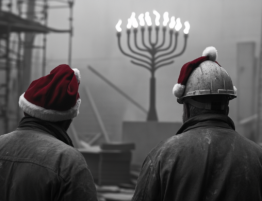
Preserving a construction lien is a relatively simple process. Depending on whether the lien attaches to the subject premises, it is either registered against title or personally served on the relevant party. Once a lien is preserved (and assuming that it is preserved in compliance with the Construction Act), it can only be discharged subject to a Court Order or by a Form 19 –Discharge of Lien. A common misconception, however, is that a discharged lien can be revived if additional services or materials are supplied to the subject property. This is not the case. Once the door closes on your lien rights, it will never re-open.
Discharge of Construction Liens
Much like a construction lien is a “Charge” against the property, a “Discharge” is a legal instrument that removes and otherwise destroys the security created as against the property – or holdback and/or securities posted into Court, as the case may apply.
The law on the discharge of construction liens is codified in Section 48 of the Construction Act, which holds that:
A discharge of a lien under this Part is irrevocable and the discharged lien cannot be revived, but no discharge affects the right of the person whose lien was discharged to claim a lien in respect of services or materials supplied by the person subsequent to the preservation of the discharged lien.[1]
In other words, once a lien is discharged, the same security – meaning security for the same amount that the initial lien was preserved for – can never be re-secured.
While this seems like a rational approach for liens that are discharged due to expiry or upon the conclusion of litigation, this strict application creates a potential conflict for parties to a settlement whose liens are voluntarily discharged.
Consider the following scenario: a subcontractor is owed $100,000.00 for services supplied, plus $40,000.00 in holdback. The subcontractor preserves a lien as against property for the full amount of $140,000.00. Shortly thereafter, the general contractor contacts the subcontractor advising that it’s willing to pay the subcontractor the $100,000.00 outstanding sum immediately and that it will release holdback once all work is done and all liens expire. The general contractor requires that the present lien be discharged immediately in its full amount. Reluctantly, the subcontractor agrees and discharges the entire lien.
Six months pass. The subcontractor has not been paid a further $45,000.00 with an additional $5,000.00 being added to the holdback. The subcontractor therefore registers a new lien in the total sum of $90,000.00, being the $45,000.00 new outstanding sum, the $5,000.00 of the new holdback, and the $40,000.00 of the prior holdback still outstanding. Is the subcontractor entitled to the full amount liened?
Present case law concludes that, despite the first discharge being voluntary, the lien claimant is not entitled to lien a second time for amounts that were encompassed in the first lien.[2] Namely, where a first lien is discharged, “any services or materials provided [for in the first lien] including holdback, cannot form part of the second lien.[3]
Therefore, in our hypothetical scenario, the subcontractor would only be entitled to a lien in the sum of $50,000.00, being subsequent to the preservation of the discharged lien, and would lose its security to the previous holdback of $50,000.00.
Take-Aways
The most important moral of this example is that lien claimants must be very careful when negotiating a discharge of a construction lien. Irrespective of whether a lien is discharged by Court Order or on consent, the effect is the same: once a lien is discharged, a claimant cannot seek protection for payment of services encompassed in that lien.
The foregoing is for informational purposes only and should in no way be relied upon as legal advice. If you have any further questions, or would like to schedule an appointment for legal advice tailored to your circumstances and business, please contact me at dan@fridmar.com.
[1] Construction Act, R.S.O. 1990, c. C.30, as amended, s. 48.
[2] Khalimov (cob Ravineview Construction) v. Hogarth, 2015 ONSC 6244 at para.35.
[3] Ben Air Systems Inc. v. Toronto Transit Commission, 2018 ONSC 2375 at para. 91(5).








